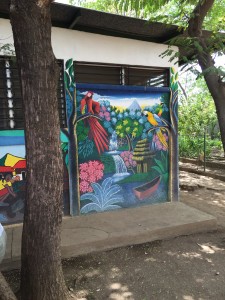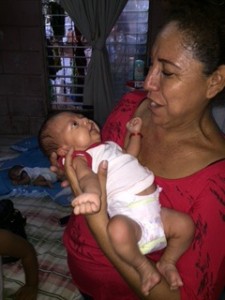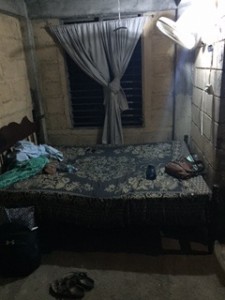This past week, we visited and spoke with a representative of the Center for Development of Central America’s (CDCA). This center and community is located seven miles outside of Managua, as a flood years ago had originally forced these families out of the city. People who became homeless from the 1972 earthquake as well as Hurricane Mitch in 1988 moved to this community for a new beginning. The government offered assistance…but mostly to the extent of providing trucks to move these newly homeless families out of the flooded city, as well as a plot of land and plastic supplies to build a new “home.” These families were separated from their beloved neighbors, extended family, and lost most of their belongings except for what they could carry with them on the trucks (very little.) In this new plot of land, rival gangs could be placed next to each other or families divided by acres. This representative made it clear that these natural disasters brought about incredibly grueling challenges for this community of families in many aspects of their lives.
After this discussion with Becca, we took a bus tour around the community of Ciudad Sandino and were able to see the homes and living conditions of these families. With 180,000 individuals currently living in this community, there are MANY health conditions that require attention with scarce funding from donations and little resources. We concluded our trip with a visit to their clinic where they offer a large amount of healthcare services such as dentistry, general care, a pharmacy, sex education for at risk adolescents among others. Becca expressed to us the importance of this clinic and the great opportunity that these healthcare resources provide for this community. It is important to note that this clinic has made a great effort to provide easy to read and informative posters that communicate significant healthcare resources and awareness of issues that affect this population. For instance, Becca showed us a poster about condom use with a relatable model with whom patients of this clinic could identify with, as opposed to a Caucasian individual who does not look them or anyone who lives in this community. A poster displaying healthy meal choices for individuals with diabetes used a small amount of words to account for the large illiterate population, and pictures that were captivating and easy to make themselves since these choices included local, Nicaraguan cuisine.
It was empowering to meet Becca, who was an American woman living in Nicaragua and identifying with these resilient individuals and working along side them to better their community together for the last 15 years. The work that is being done in Cuidad Sandino is greatly impacting the lives of those who live there, but a lack of funds continues to limit the positive efforts and change that can be done. Future construction looks to provide a gynecology clinic, a kitchen for healthy cooking classes for those affected by diabetes, as well as a better space to hold meetings and support groups for these families! We are thrilled to have had the opportunity to have been introduced to the growth and change that is taking place within this community, as well as to have met with some of the faces that are making it all possible.
Un fuerte abrazo de,
Steph, Kelly, Ariana



